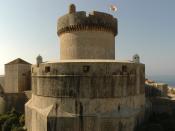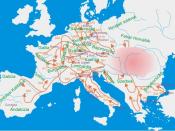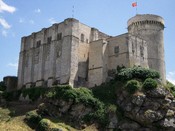The medieval era has often been considered the Dark Ages, a time of little civil development and simple, almost backwards, social systems. Medieval warfare specifically has been regarded with little respect and has been seen to lack military artistry. From this fertile, yet uncultivated, ground comes the early modern period of European history. The main point of contention is the cavalry's early dominance over European culture, which inevitably will be replaced by infantry soldiers. Several scholars have argued the importance of medieval contributions to the artistry of war. One scholar, Charles Oman, writing at the end of the nineteenth century, argues that the cavalry, which shaped European medieval culture, was easily replaced with the more deadly infantry. Other authors, however, do not agree. Geoffrey Hindley and J. Verbruggen value the highly developed and evolved system in which the cavalry and mounted soldier worked. In context with future developments, Andrew Ayton and J.
Price connect medieval warfare with the modern military revolution, which happened after the medieval period. Although medieval warfare little resembles our own warfare, it did shape its own time and have its own artistry.
Charles Oman, in his book, A History of the Art of War, explains why the cavalry looses its dominance over European battles. Using the Falkirk battle as an example, Oman displays two ways in which foot soldiers are able to prevail against the charge of a heavy horse and replace it in battle. Although Scotland and England had for many years been at war, Falkirk saw the English king, Edward I, personally command the armies against the inferior Scottish rebels (Oman 563-565). Heavy cavalry almost always rode over and slaughtered the infantry, therefore the cavalry was sent first to charge the Scottish soldiers, who lacked a sufficient cavalry themselves (Oman 567). The Scottish pike...



Good essay
You have explained the medieval warfare in a good mode. I think your quotations show your skill of writing good essays. You also have comment on the books you used. I can see that you have think a lot about this topic.
0 out of 0 people found this comment useful.